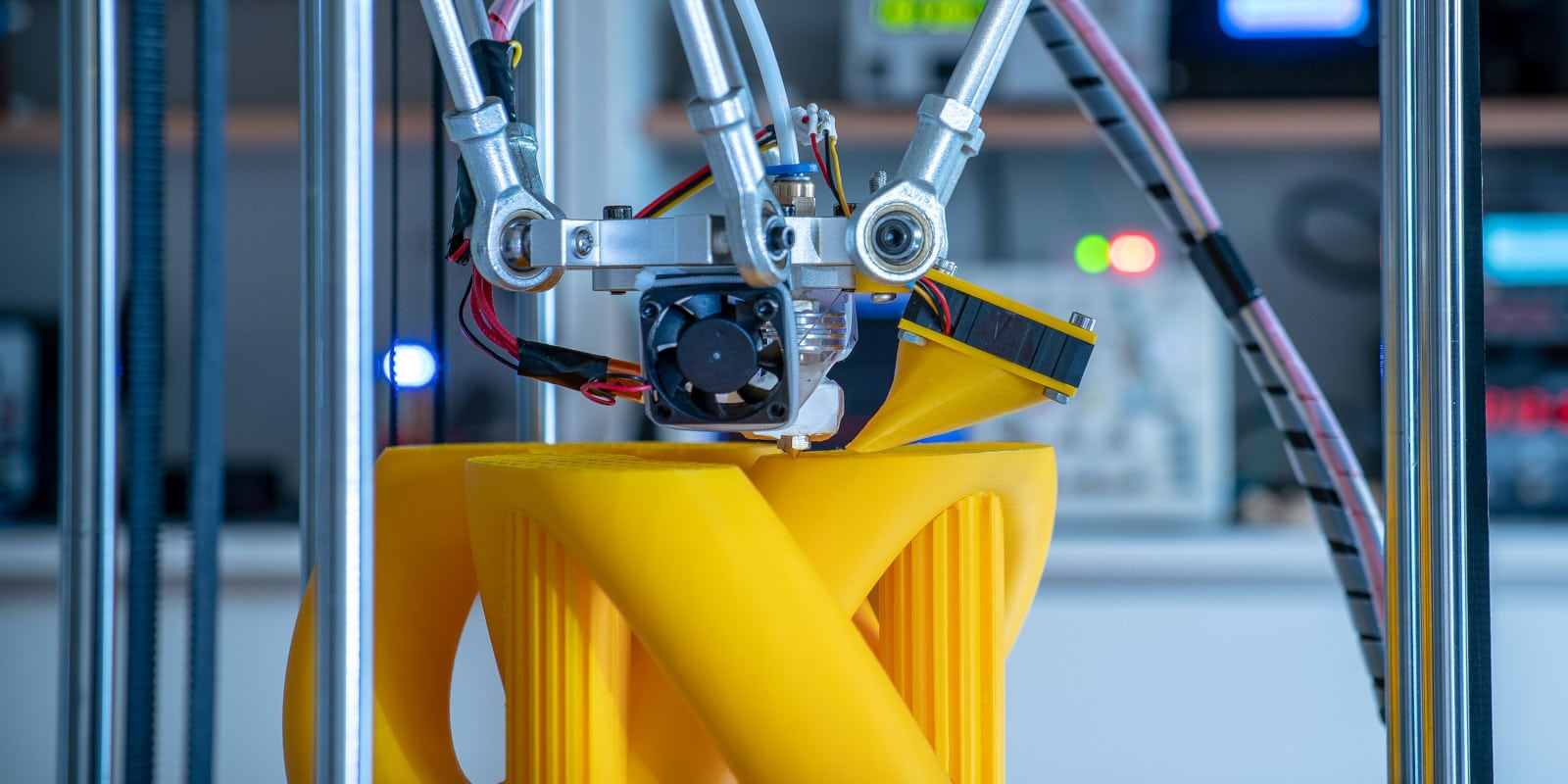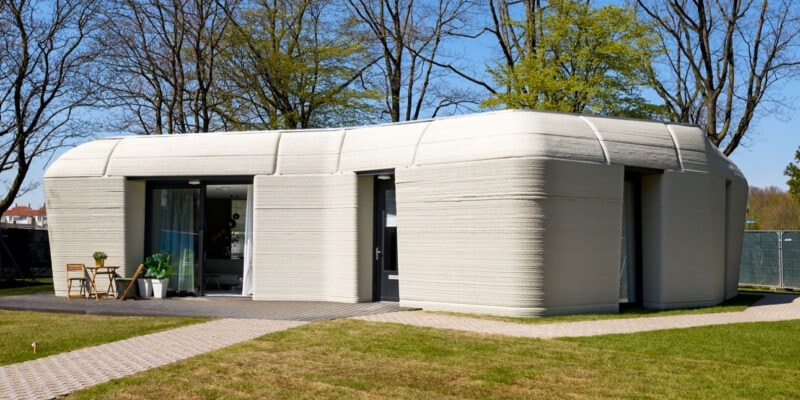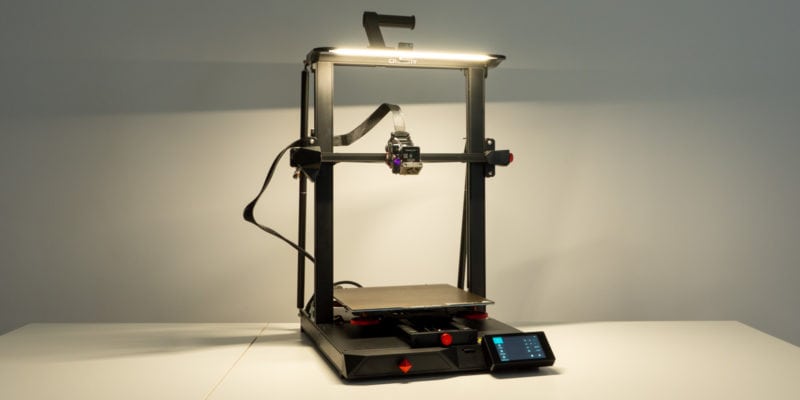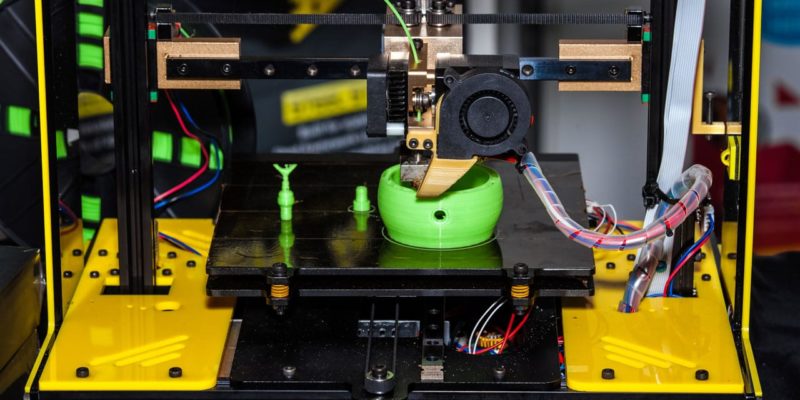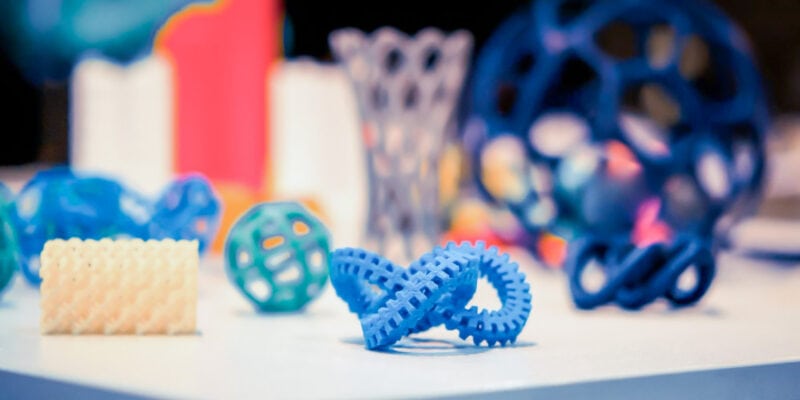3D printing costs have reduced drastically in the last decade, and you can now get a budget 3D printer for as low as $300. This development has made 3D printing more accessible and affordable to many hobbyists looking to get into 3D printing.
However, there is ambiguity about the actual costs of 3D printers. How much does the material cost? Are there any maintenance costs? What about costs of operation and labor used in professional settings?
In this article, we’ll not only look at the price tag of these machines but understand the various factors involved in owning a 3D printer. It’ll help you make an informed decision if you’re looking to purchase a 3D printer and give a little bit of insight into the 3D printing manufacturing process.
Factors that Influence the Price of 3D Printing
3D Printer Cost
The cost of 3D printers has come down considerably in recent years. You can find a decent-quality 3D printer for around $300. However, the price can go up to $10,000 or even higher for industrial-grade machines.
These printers can be subdivided into various 3D printer price categories.
Entry-Level 3D Printers (sub-$300)

Entry-level 3D printers (less than $300 cost) are a great way to learn, understand and grasp the concepts of 3D printing technology. These printers are often aimed at school students, beginners, and hobbyists on a budget and would use them majorly for basic purposes such as printing plastic models, figurines, and hobby objects.
3D printers such as the Creality’s Ender 3 v2, Anycubic Photon Mono, and the Flashforge Finder are good enough to create basic 3D printed parts and have a 3D printer cost of under $300. These machines let you 3D print with PLA, ABS, PETG, TPU, and other materials. Due to their low prices, they are popular amongst the maker community, and you can easily get good support for these machines.
However, the downsides are their small build volume, their DIY nature, and a high susceptibility to print failures. Nonetheless, considering the price point at which they come, these 3D printers provide excellent value, and when used correctly are capable of delivering excellent quality 3D prints.

Hobbyist 3D Printers ($300-$1000)
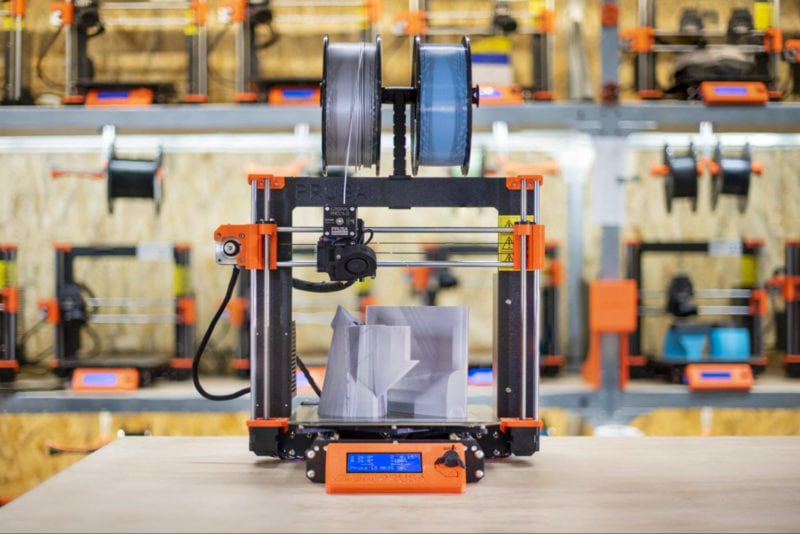
If you go one step above and are ready to spend extra money, there are some excellent options and features in 3D printers under $1000. These printers offer more build volume, better functionality, and are aimed toward semi-professionals and hobbyists looking to make money with their 3D printer.
Some of the advanced features that these 3D printers offer are automatic bed leveling, print pause/resume, multi-material printing, enclosed build volume, safety features, and more reliable components. These 3D printers are also compatible with more materials due to a better hot end, and offer improved 3D print quality.
The best example of an FDM 3D printer in this price range is probably the Prusa i3 MK3S +, but the under $1000 price opens up many options in the resin 3D printers segment. These offer increased build volume, higher-resolution 3D print capabilities, and other additional features over their cheaper counterparts.
The $300-$1000 3D printer cost category tends to be a sweet spot as it offers considerable upgrades over the sub-$300 category in terms of 3D print quality and build volume. If you are thinking about selling 3D prints and are serious about it, most of these machines are capable of delivering great value for your money.

Prosumer 3D Printers ($1000-$5000)

Prosumer 3D printers ($1000-$5000 cost) are aimed at professionals who utilize 3D printers in their daily workflow. These printers offer a better user experience, come with an integrated slicer and use proprietary materials to print parts with more ease and reliability. They offer a wide range of sophisticated features such as Wi-Fi and Ethernet connectivity, air filtration systems, touchscreens, build enclosures, and high-level customer service.
Some of the most notable examples of 3D printers in this price class include the Formlabs 3 and 3+.
The drawback, however, is their limited upgradability and a closed ecosystem. You tend to be tied to the manufacturer’s software, slicers, and replacement components. Additionally, you can be restricted to using only their printing materials with your machine, which nearly always are more expensive than others.
Even so, in a professional workflow, print quality, lower lead times, and reliable performance are crucial elements that are nearly always worth the 3D printer cost.
If all of these factors are important to you and you do not mind paying the extra money for a better user experience, 3D printers in this price range will be an excellent suit for you without actually breaking your bank on enterprise solutions.
Professional / Enterprise 3D Printers ($5000+)
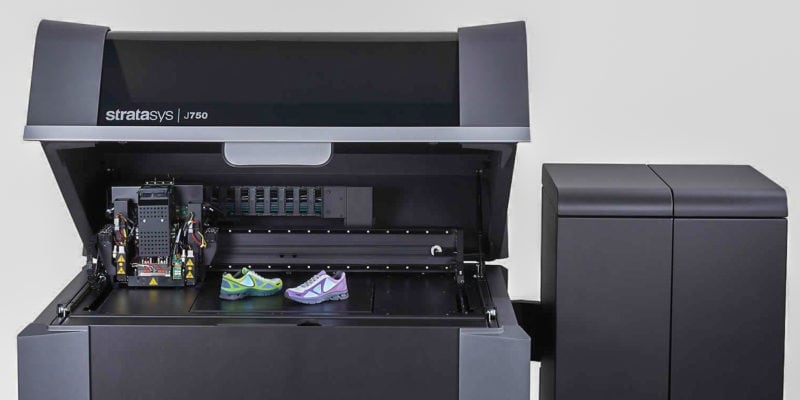
3D printers with a $5000+ cost are enterprise-level machines that come with all the advanced features you would ever need. At this price range, 3D printers are longer for hobby purposes but are used for high-level prototyping and industrial applications.
Other than the features they offer, these machines are optimized for an easy workflow and seamless integration with the company’s other solutions. They are not restricted to FDM and (M)SLA printers anymore either. Instead, they can also use Selective Laser Sintering (SLS), PolyJet, or Multi Jet Fusion (MJF) technology to offer the highest levels of quality and precision.
In terms of 3D printing materials, they offer the best of the best as well. Advanced materials like Carbon fiber, reinforced plastics, metals, Ultem, PEEK, and Nylon are all options. With heated print chambers, dedicated support teams, proprietary solutions for your workflow, and premium components capable of producing end-use parts.
However, the cost you end up paying is not just limited to the 3D printer price, as their running and operating costs significantly add up over time. You need a dedicated operator, cleaning equipment, timely maintenance, and sophisticated machinery compatible with these printers. All of this is expensive and is only feasible for industries that offer high-end 3D printing services.
Material Costs
Aside from the 3D printer cost itself, it is also important to consider the cost of the consumable material that is used to 3D print with. We will take a look at filament and resin, as these are the ones that are used in hobbyist printers.
Filament
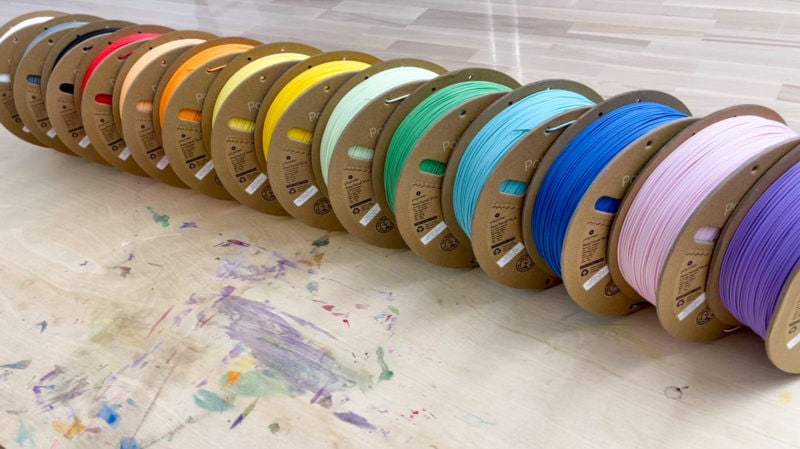
FDM printers use thermoplastic filament as their material to produce objects. These are amongst the cheapest 3D printing materials you can get, and they offer great value for money due to their compatibility in different applications.
3D printing filaments are either 1.75 mm or 2.85 mm in diameter and typically come in spools between 500 grams and 8 kg, the most common being 1 kg spools.
PLA, ABS, PETG, and TPU are the materials that are most commonly used. Filaments are available in a variety of colors, and the price ranges from $15 to $50 per kg, with the average being around $25. The cost of filament is not just dependent on the weight but also goes up with the material type and quality.
There are also more engineering-focused plastics such as Nylon, Carbon Fiber, PEEK, ULTEM, and Polycarbonate. These are usually meant for end-use components and are only compatible with higher-end 3D printers.
While considering the cost of 3D printing filament, you need to include the material cost of print failures, support materials, and testing model costs. A one kg roll does not equate to one kg of models produced.
Ensuring that your 3D printer functions well and is optimized to print these materials will help you increase the yield per unit of filament.
Resin
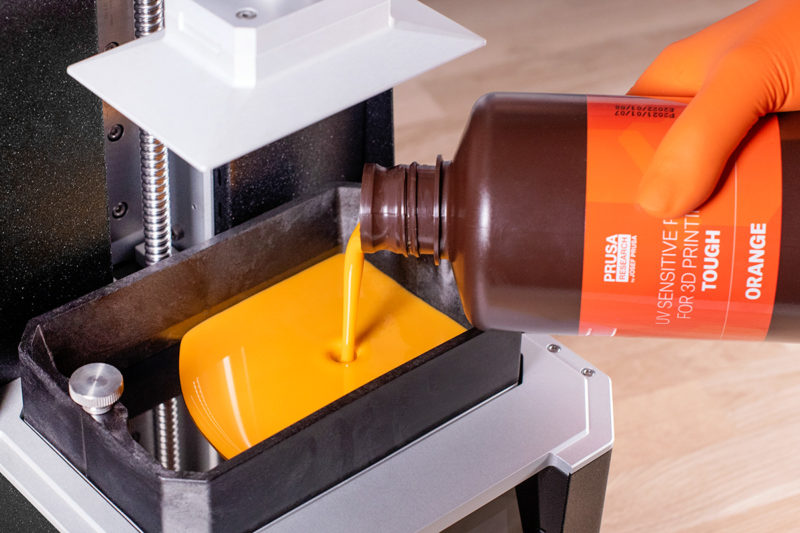
(M)SLA printers use photosensitive liquid resin, which cures when exposed to UV light. 3D printer resin can be classified into different resin categories based on its applications. For example, there are specially formulated resins such as engineering resins, dental resins, clear resins, ceramic resins, and even water washable resins.
You get standard resins meant for more generic use, such as producing miniature models, toys, and 3D printing figurines. One-liter bottles of standard resin start at about $40 and go up to $80, depending on the manufacturer.
Specialty resins can cost anywhere from $50 to $150, depending on the brand you use and where you get it. Formlab 3D printers are compatible only with Formlabs resin, which is expensive and comes in cartridges instead of bottles. Typically, as your 3D printer price increases, so do your material costs.
As with plastic filament, you need to consider the costs of resin print failures and material wastage in your calculations. 3D printer resin as a material is more expensive than plastic filaments, and while you get higher quality prints from resins, the cost per 3D print on resin printers is also higher than on FDM printers.
Labor Costs
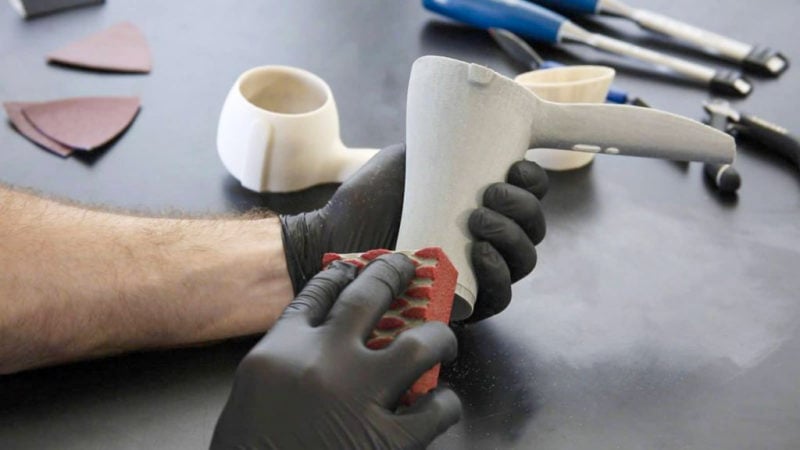
Even though you do not need to attend the 3D printer 24/7, there is no denying that 3D printing is a labor-intensive task. And while you might not worry about these costs on a personal level, if you’re 3D printing for profit, you need to account for these costs.
Overall we can categorize labor costs into three main parts – operating a 3D printer, post-processing of 3D prints, and labor for maintaining and repairing the 3D printer.
If you get a prosumer-level 3D printer for your business, you will need an operator to attend your 3D printing processes. From sending a file to the printer until the last layer is finished printing, someone needs to monitor everything. You must account for print failures and any mid-print issues in these costs.
Post-processing costs are another critical criterion in the 3D printing workflow. FDM 3D prints require the least post-processing, whereas working with SLS and SLA printers is more labor-intensive.
A dedicated wash and cure station for resin prints, or a powder recovery system for SLS machines considerably reduces the labor involved and minimizes the working hours required.
If you’re running your 3D printers continuously, for example in a 3D print farm, you need to consider the need for regular maintenance and repair. Maintaining a 3D printer means you need to have a skilled person to look after the optimal functioning of your machine and the fixing of any issues that might arise.
Part Costs
3D printers have many parts, and eventually, some of them will need to be replaced when they wear out. You can replace them with identical versions or upgrade your 3D printer’s components to match your needs better. Some of the common parts you can upgrade include the hot end, stepper motors, linear rails, and 3D printer controller board.
While choosing a 3D printer, you need to ensure that these replacement parts are accessible. For entry-level and hobbyist 3D printers that are widely popular, the availability of parts is rarely an issue. They can be found anywhere (or even 3D printed) and they are reasonably priced.
3D Printer Operating Costs
Other than labor and material costs, it is also important to keep in mind the power consumption of a 3D printer. The heating bed and hot end heater cartridge are the elements that consume the most power, while small electronic components like the fans and lights consume the least power. Again, depending upon the size of your 3D printer, larger stepper motors and build plate will draw more power.
A typical hobbyist-level 3D printer consumes around 50-150 W of electricity while printing. Let’s consider an average power consumption of 100 W and an electricity price of $0.13 per kWh. It results in an hourly cost of 1.3 cents. For a generic 3D printer printing for about 15 hours a week, the yearly cost would be just over $10.
Software/Slicers
Until we’ve covered the costs of all the hardware involved in 3D printing, the software is also an integral component. Ultimaker Cura, PrusaSlicer, and Ideamaker are great free slicers that offer great functionalities while being free to use and can be customized to your machine.
There exist paid slicers such as the Simplify3D, which offer an easier workflow, however considering that free options are now on-par with it, purchasing a slicer as a hobbyist for FDM 3D printing seems redundant.
Is It Expensive to 3D Print?
The short answer is no, 3D printing is not expensive. You can get a 3D printer for a few hundred dollars and the printing material costs about twenty cents per gram. So, if you compare the cost of 3D printing to other manufacturing processes, it is actually quite low.
The main reason why people think that 3D printing is expensive is that they don’t know how to use it effectively. If you are just starting out, then it will definitely be more expensive for you because you will need to buy equipment and there is a learning curve associated with using it. However, once you get the hang of it, you’ll be able to produce whatever you want at a very low cost.
Is 3D Printing an Expensive Hobby?
It can be, but it doesn’t have to be. The actual 3D printer cost is quite low these days, and you can also find some great deals on filament and resin (the material that 3D printers use to create objects).
That said, there are definitely some more expensive printers out there, and if you’re looking to get into more advanced printing techniques or materials, the cost of supplies can quickly add up. But like any hobby, the key is finding what you’re interested in and then doing your research to find the best prices. There’s a lot of information available online these days about 3D printing, so don’t be afraid to do some digging to find what’s right for you.
How Much Do 3D Printers Cost on Average?
3D printers can range in price from a few hundred dollars to several thousand, depending on the model and features. Some cheaper models may be limited in the size and type of objects they can print, while more expensive ones can print larger objects in multiple colors. 3D printers are also becoming increasingly affordable as the technology becomes more widely available.
Is 3D Printing Cost-Effective?
Yes, 3D printing is cost-effective for small businesses and inventors.
3D printing technology offers a number of advantages over traditional manufacturing techniques. It’s cheaper to produce small batches of products with 3D printers than it is to produce those products using traditional manufacturing techniques. And because 3D printers can create customized products, they’re ideal for businesses that want to produce unique products or for inventors who want to quickly prototype new ideas.
That said, there are some disadvantages associated with 3D printing. For example, printers can be slow and the quality of prints can vary from one printer to the next. But as the technology continues to improve, these disadvantages are likely to disappear. So overall, 3D printing is cost-effective and here to stay.
How Would I Start a Business Using 3D Printing?
There are a few things to consider before starting a business using 3D printing. First, you need to decide what type of business you want to create. There are a number of different options, such as making and selling 3D prints, providing 3D printing services, or becoming a reseller of printers and related materials and supplies.
Once you’ve decided on the business model you want to use, the next step is to do some research on the marketability of your chosen product or service. It’s important to make sure there is demand for what you’re offering, and that there is enough potential profit in the market to make your venture worthwhile.
What is the Average Price for a 3D Printer?
The average price for a 3D printer can vary greatly depending on the features and quality of the printer. However, you can expect to pay anywhere from $200 to $5000 for a 3D printer. printers that are lower in cost may not have as many features or be as reliable as those that are more expensive. Ultimately, it is important to choose a 3D printer that fits your needs and budget.
What are Some of the Most Popular Materials Used for 3D Printing?
Some of the most popular materials used for 3D printing include filaments such as PLA, ABS, PETG, and TPU, as well as a variety of resins for resin 3D printers. Each material has its own specific properties that make it suited for different applications. For example, PLA is a biodegradable plastic that is often used for creating prototypes or small objects, while ABS is a stronger and more durable material that is often used for creating products that will be put to use. TPU and PETG are also popular choices for 3D printing, offering different advantages depending on the project.
How Much Do 3D Printing Supplies Cost?
The cost of 3D printing supplies can vary depending on the type of filament or resin used and the spare parts needed. Filament tends to be less expensive than resin, and most 3D printers come with some spare parts included.
That said, some filaments can be more expensive than others. For example, a 1kg spool of ABS filament (a common type of plastic filament) typically costs around $25. Specialty filaments, like TPU, can go for a lot more. Resins also vary in price, with high-end resins costing upwards of $200 per liter.
3D printer owners may also need to purchase spare parts from time to time. For instance, 3D printers that use Bowden extruders often need a new PTFE tube every once in a while. These tubes typically cost around $5.
Generally, 3D printing supplies are not terribly expensive, and most people only need to replace consumables like filaments and spare parts every few months. However, the cost of 3D printing can add up over time, so it’s important to factor in the cost of 3D printing supplies when budgeting for a 3D printer.
What Types of Businesses Can Benefit From 3D Printing?
A business that could benefit from using 3D printing is a business that needs to create products quickly and efficiently. For example, a company that makes medical prosthetics or eyeglasses could use 3D printing to create prototypes of their products very quickly. This would save the company time and money because they would not have to wait for the prototypes to be made by a third party.
Another type of business that could benefit from 3D printing is a business that has a lot of custom products. For example, a jewelry store could use 3D printing to create unique designs for their customers. This would give the store an edge over its competition because it would be the only store with those specific designs.
What are Some of the Disadvantages of 3D Printing Technology?
There are a few disadvantages to 3D printing technology. First, reliable printers can be expensive. Second, the printers can be difficult to operate and require some technical expertise.
Third, not all materials can be 3D printed (e.g. metals). Fourth, the resolution of 3D printing is not always very good, and the final product might need post-processing as it is not as accurate or smooth as desired.
Finally, 3D printing technology is still fairly new and there are not many experts in the field yet, so finding someone who can help with maintenance, repairs, or troubleshooting may be difficult.
Conclusion
The majority of the 3D printing costs depend on what 3D printer you purchase. If you get an entry-level 3D printer, you’ll quickly recover your investment; however, you’ll be limited only to basic applications. On the other hand, prosumer and professional 3D printers cost a lot more, yet they are very well suited for industrial applications of 3D printing.
In calculating 3D printing costs, you also need to consider the costs of material, labor, operating, and expenses of any particular software you might use. All of this will vary greatly depending on your use case scenario, and however, once you’ve analyzed all of it, you’ll have a clear idea about your expenses in the 3D printing hobby.
Let us know your thoughts on the 3D printing costs, and if you feel there’s something more to it that we might’ve missed out on, feel free to comment below.
